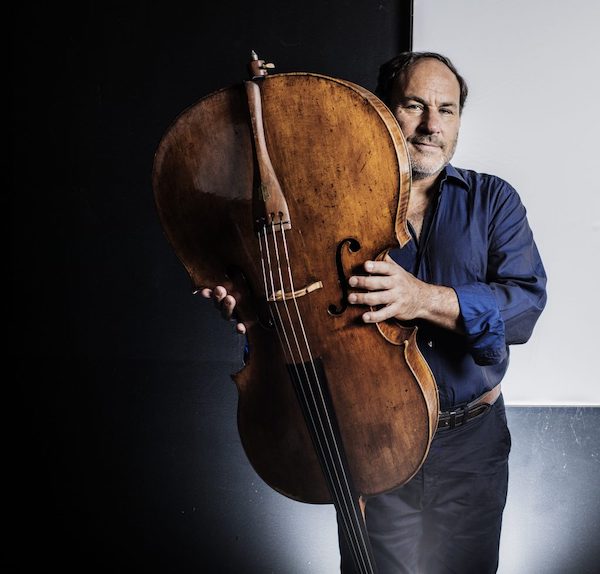Gary Hoffman lights up the Academy’s concert at Kravis Center

Cellist Gary Hoffman performed music of Schumann and Sallinen with the Academy of St. Martin in the Fields Monday night at the Kravis Center. Photo: William Beaucardet
For most soloists, the performance of a major concerto would constitute a decent day’s work. By that standard, the cellist Gary Hoffman more than earned his pay Monday night.
He gave a rich and robust performance of Schumann’s Cello Concerto at the Kravis Center in West Palm Beach, accompanied by the renowned strings of the Academy of St. Martin in the Fields. After intermission he returned to the stage to play a concerto-length work by the contemporary Finnish composer Aulis Sallinen.
The Schumann concerto, arranged for strings from the original version for full orchestra, opens with an extended melody for cello, and rarely will one hear it played this well. With smooth bowing and a rich, well-focused tone, Hoffman played the long passage with urgency, loads of personality and a strong sense of forward motion. His playing throughout the first movement was clean and technically immaculate, with a strong sense of drama.
Hoffman delivered the aria-like melody of the slow movement in delicate phrases, with striking pianissimo passages. In the finale, he brought rhythmic bite and deft technique, with a sense of largeness and authority that showed in his grandiose playing of a climactic chordal passage.
Having presumably rested up during intermission, Hoffman returned to the stage for Sallinen’s The Nocturnal Dances of Don Juan Quixote, an eerie 1986 work that seems to draw on more than a century of musical styles. It opened mysteriously, with glassy tones in the violins. Hoffman entered by drawing growling, violent tones from the cello that cut through the mist established by the strings.
After this murky beginning, a straightforward melody occurred in both the cello and the orchestra. Jaunty and shot through with dark, minor-keys twists, it sounded like a distant cousin to the theme from The Munsters. Crashing, dissonant chords interrupted that theme and the piece continued to lurch from approachable melodies to astringent, contemporary tones. Technically, it was a workout for the soloist, requiring Hoffman to bounce his bow rapidly across the strings, play multiple notes at once and play at lightning speed. After a hyper-rapid cello passage, it went out with a squeak.
The concert opened with Schubert’s Overture in C Minor, a grim, driving work that never quite got off the ground. Although the orchestra played with a rich sound and tight precision, there was some out-of-tune playing in the violins, surprising in a celebrated ensemble of this caliber. Sometimes a conductor comes in handy.
The orchestra was by far the best in the last work on the program, Tchaikovsky’s Serenade for Strings. The opening, a series of chords that sound like a religious procession, came off as grand and flowing, with great resonance and sweep. The orchestra’s range of colors was rich, as it pivoted from the sustained opening to gravelly figures in the lower strings, under pensive tones in the other instruments.
The second movement waltz came off with wistful grace, with lyric playing and sudden pianissimos that gave the movement a touch of nostalgia. The third movement Elégie opened with hushed but full-bodied playing, leading to a sweeping crescendo with the musicians bowing full out. Crisp, assured playing marked the last movement, with a throbbing, organ-like account of the melody that opened the work.
The Kravis Center’s classical series continues 8 p.m. March 13 with a concert by the New World Symphony. The program includes Zoltán Kodály’s Dances of Galanta, Beethoven’s Symphony No. 2, and Florence Price’s Piano Concerto in D minor with soloist Michelle Cann. kravis.org
Posted in Performances
Leave a Comment
Tue Feb 28, 2023
at 10:17 am
No Comments





